Circular Geodesics in a New Generalization of q-Metric
Abstract
:1. Introduction
2. q-Metric
3. Generalized q-Metric
Effective Potential
4. Circular Geodesics in the Equatorial Plane
4.1. Circular Orbits for the Time-like Trajectory
4.2. Circular Orbits for the Light-like Trajectory
4.3. Revisit Circular Geodesics in q-Metric
4.3.1. Time-like Geodesics in q-Metric
4.3.2. Light-like Geodesics for q-Metric
5. Summary and Conclusions
Funding
Data Availability Statement
Acknowledgments
Conflicts of Interest
Appendix A. Christoffel Symbols
| 1 | Prolate spheroidal coordinates are three-dimensional orthogonal coordinates that result from rotating the two-dimensional elliptic coordinates about the focal axis of the ellipse. |
| 2 | In fact, the Arnowitt-Deser-Misner mass which characterizes the physical properties of the exact solution also has the same expression and should be positive [23] (Appendix). |
| 3 | In general, these fields should be regular at the symmetry axis. Sometimes this condition is referred to as the elementary flatness condition. |
| 4 | Note that in the third row it is calculated for some very close to . |
References
- Weyl, H. Zur Gravitationstheorie. Ann. Phys. 1917, 359, 117–145. [Google Scholar] [CrossRef]
- Weyl, H. Republication of: 3. On the theory of gravitation. Gen. Relativ. Gravit. 2012, 44, 779–810. [Google Scholar] [CrossRef]
- Erez, G.; Rosen, N. The gravitational field of a particle possessing a multipole moment. Bull. Res. Counc. Isr. 1959, 8F, 47–50. [Google Scholar]
- Zipoy, D.M. Topology of Some Spheroidal Metrics. J. Math. Phys. 1966, 7, 1137–1143. [Google Scholar] [CrossRef]
- Voorhees, B.H. Static Axially Symmetric Gravitational Fields. Phys. Rev. D 1970, 2, 2119–2122. [Google Scholar] [CrossRef]
- Ernst, F.J. Black holes in a magnetic universe. J. Math. Phys. 1976, 17, 54–56. [Google Scholar] [CrossRef]
- Doroshkevich, A.G.; Zel’dovich, Y.B.; Novikov, I.D. Gravitational Collapse of Non-Symmetric and Rotating Bodies. Zhurnal Eksperimentalnoi i Teoreticheskoi Fiziki 1965, 4, 170. [Google Scholar]
- Geroch, R.; Hartle, J.B. Distorted black holes. J. Math. Phys. 1982, 23, 680–692. [Google Scholar] [CrossRef]
- Bretón, N.; Denisova, T.E.; Manko, V.S. A Kerr black hole in the external gravitational field. Phys. Lett. A 1997, 230, 7–11. [Google Scholar] [CrossRef]
- Lemos, J.P.S.; Zaslavskii, O.B. Black hole mimickers: Regular versus singular behavior. Phys. Rev. D 2008, 78, 024040. [Google Scholar] [CrossRef] [Green Version]
- Boshkayev, K.; Malafarina, D. A model for a dark matter core at the Galactic Centre. Mon. Not. R. Astron. Soc. 2019, 484, 3325–3333. [Google Scholar] [CrossRef]
- Abbott, B.P.; Abbott, R.; Abbott, T.D.; Abernathy, M.R.; Acernese, F.; Ackley, K.; Adams, C.; Adams, T.; Addesso, P.; Adhikari, R.X.; et al. Observation of Gravitational Waves from a Binary Black Hole Merger. Phys. Rev. Lett. 2016, 116, 061102. [Google Scholar] [CrossRef] [PubMed]
- Ryan, F.D. Gravitational waves from the inspiral of a compact object into a massive, axisymmetric body with arbitrary multipole moments. Phys. Rev. Lett. 1995, 52, 5707–5718. [Google Scholar] [CrossRef] [PubMed]
- Afshordi, N.; Paczyński, B. Geometrically Thin Disk Accreting into a Black Hole. Astrophys. J. 2003, 592, 354–367. [Google Scholar] [CrossRef] [Green Version]
- van der Klis, M. Millisecond Oscillations in X-ray Binaries. Astron. Astrophys. 2000, 38, 717–760. [Google Scholar] [CrossRef] [Green Version]
- McClintock, J.E.; Remillard, R.A. Black hole binaries. In Compact Stellar X-ray Sources; Cambridge University Press: Cambridge, UK, 2006; Volume 39, pp. 157–213. [Google Scholar]
- Ingram, A.R.; Motta, S.E. A review of quasi-periodic oscillations from black hole X-ray binaries: Observation and theory. New Astron. Rev. 2019, 85, 101524. [Google Scholar] [CrossRef] [Green Version]
- Bursa, M.; Abramowicz, M.A.; Karas, V.; Kluźniak, W. The Upper Kilohertz Quasi-periodic Oscillation: A Gravitationally Lensed Vertical Oscillation. Astrophys. J. 2004, 617, L45–L48. [Google Scholar] [CrossRef]
- Quevedo, H. Exterior and interior metrics with quadrupole moment. Gen. Rel. Grav. 2011, 43, 1141–1152. [Google Scholar] [CrossRef] [Green Version]
- Faraji, S.; Trova, A. Magnetised tori in the background of a deformed compact object. Astron. Astroph. 2021, 654, A100. [Google Scholar] [CrossRef]
- Quevedo, H. General static axisymmetric solution of Einstein’s vacuum field equations in prolate spheroidal coordinates. Phys. Rev. D 1989, 39, 2904–2911. [Google Scholar] [CrossRef]
- Geroch, R. Multipole Moments. II. Curved Space. J. Math. Phys. 1970, 11, 2580–2588. [Google Scholar] [CrossRef]
- Boshkayev, K.; Gasperín, E.; Gutiérrez-Piñeres, A.C.; Quevedo, H.; Toktarbay, S. Motion of test particles in the field of a naked singularity. Phys. Rev. D 2016, 93, 024024. [Google Scholar] [CrossRef] [Green Version]
- Quevedo, H. Mass Quadrupole as a Source of Naked Singularities. Int. J. Mod. Phys. D 2011, 20, 1779–1787. [Google Scholar] [CrossRef] [Green Version]
- Abramowitz, M. Handbook of Mathematical Functions, with Formulas, Graphs, and Mathematical Tables; Dover Publications, Inc.: New York, NY, USA, 1974. [Google Scholar]
- Poisson, E. Retarded coordinates based at a world line and the motion of a small black hole in an external universe. Phys. Rev. D 2004, 69, 084007. [Google Scholar] [CrossRef] [Green Version]
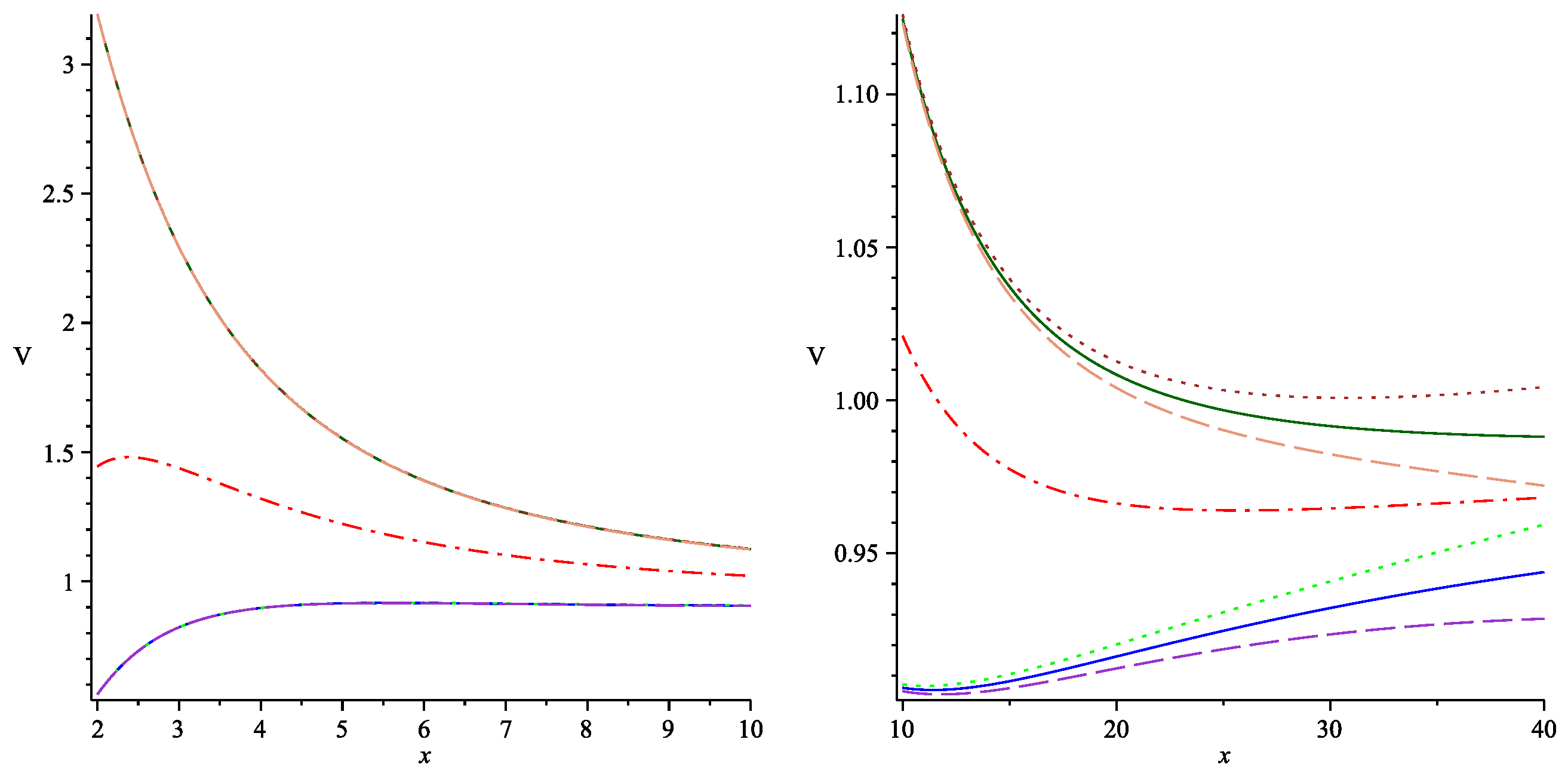
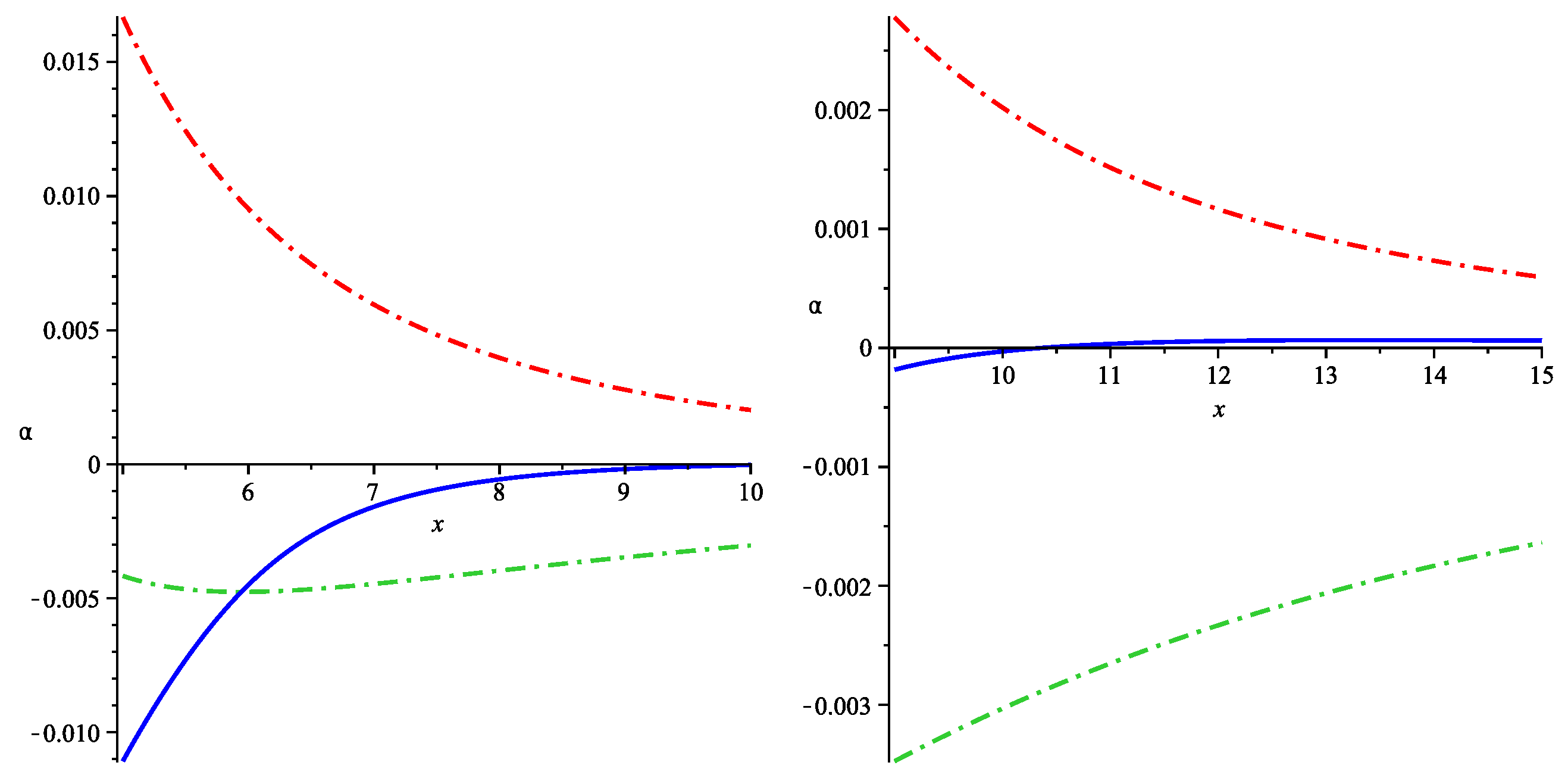
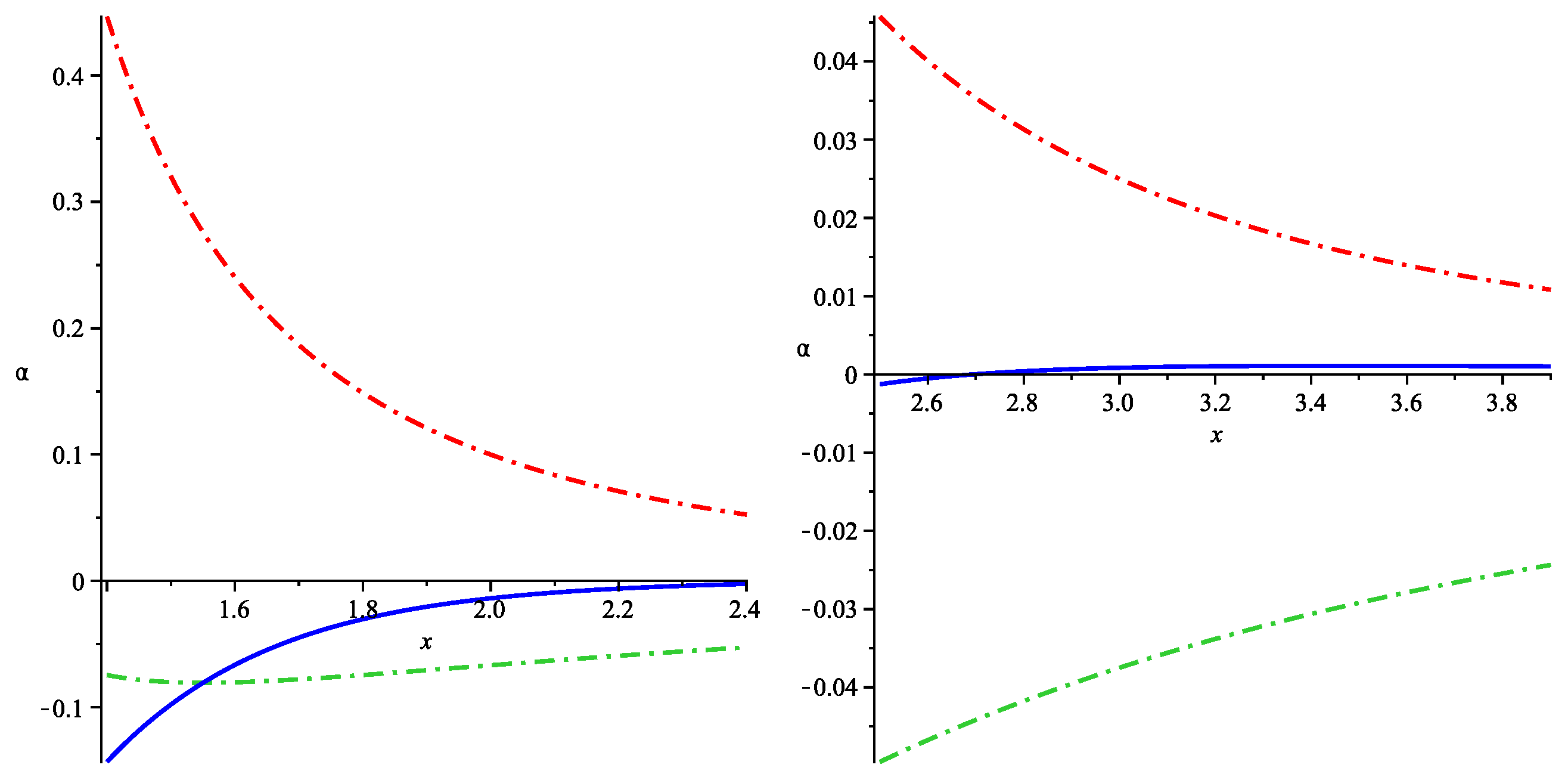
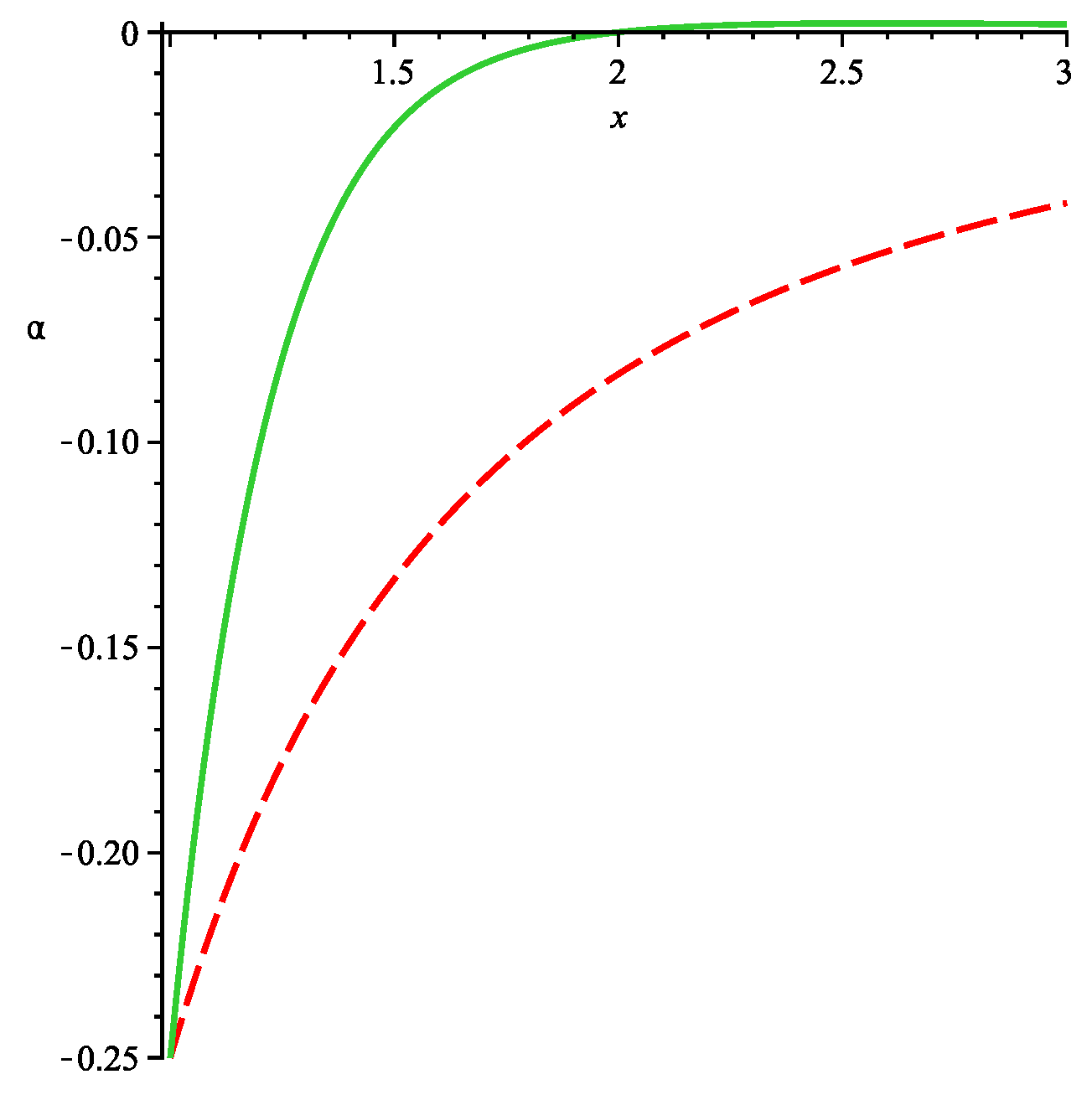
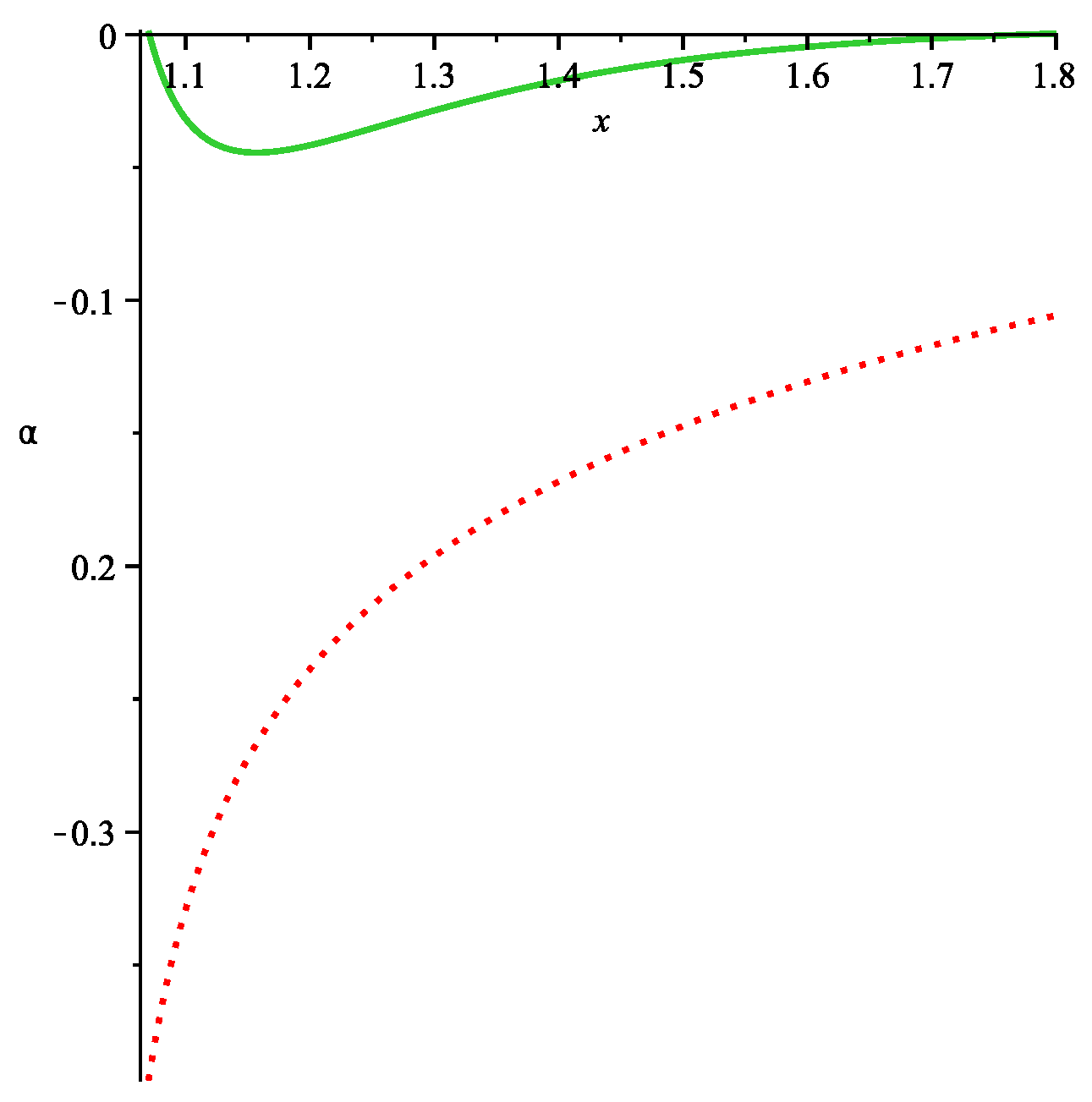
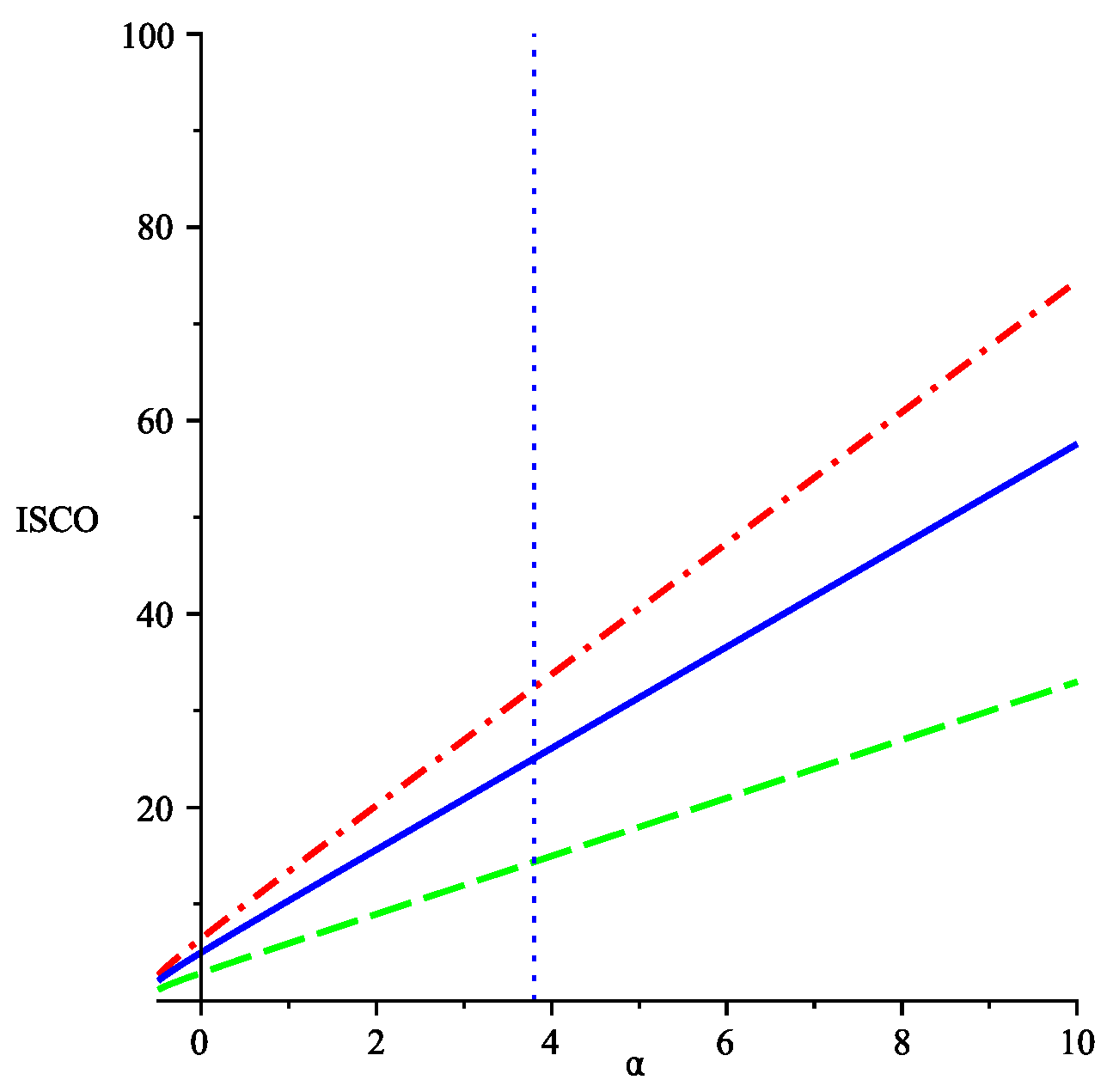

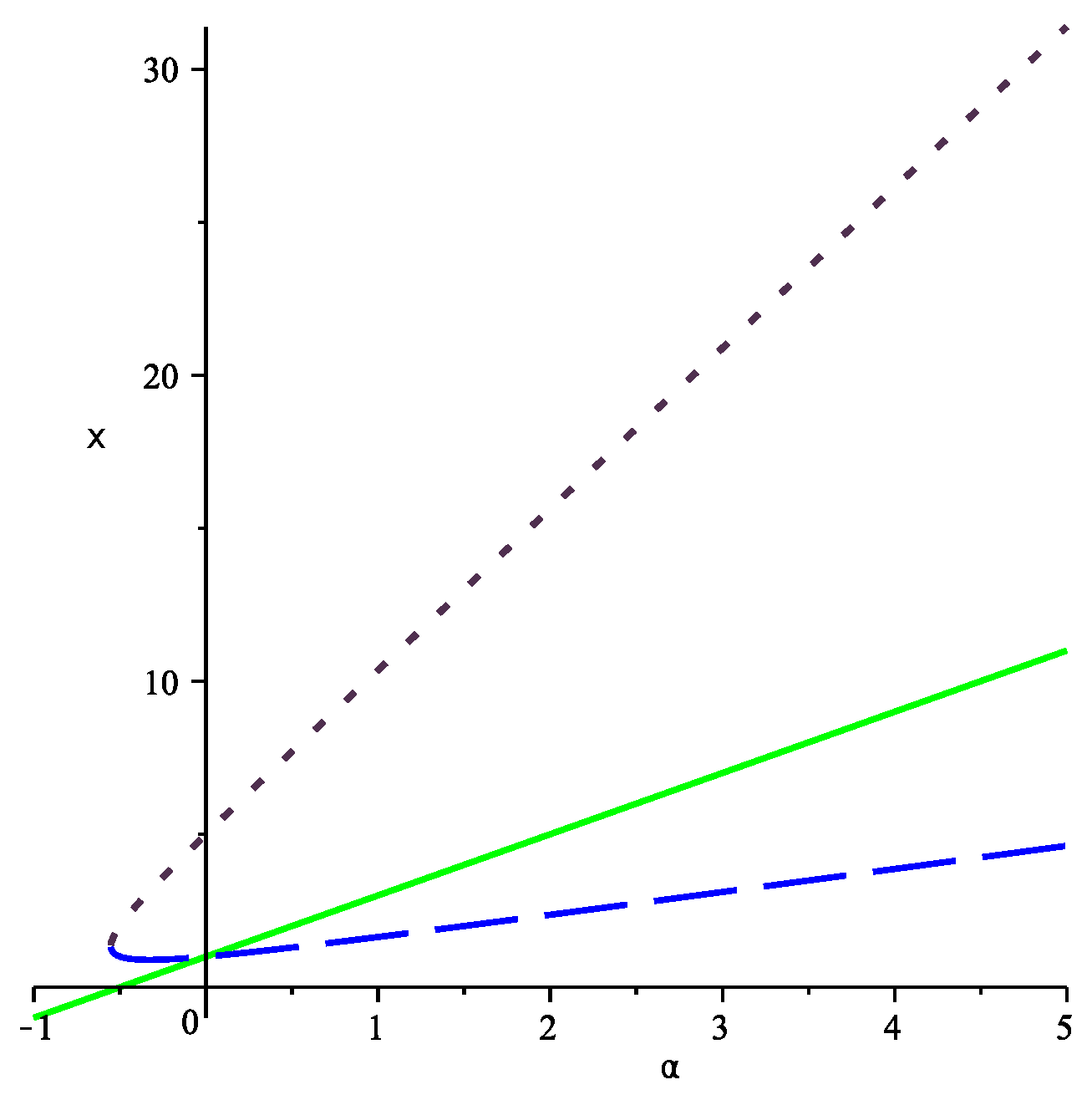
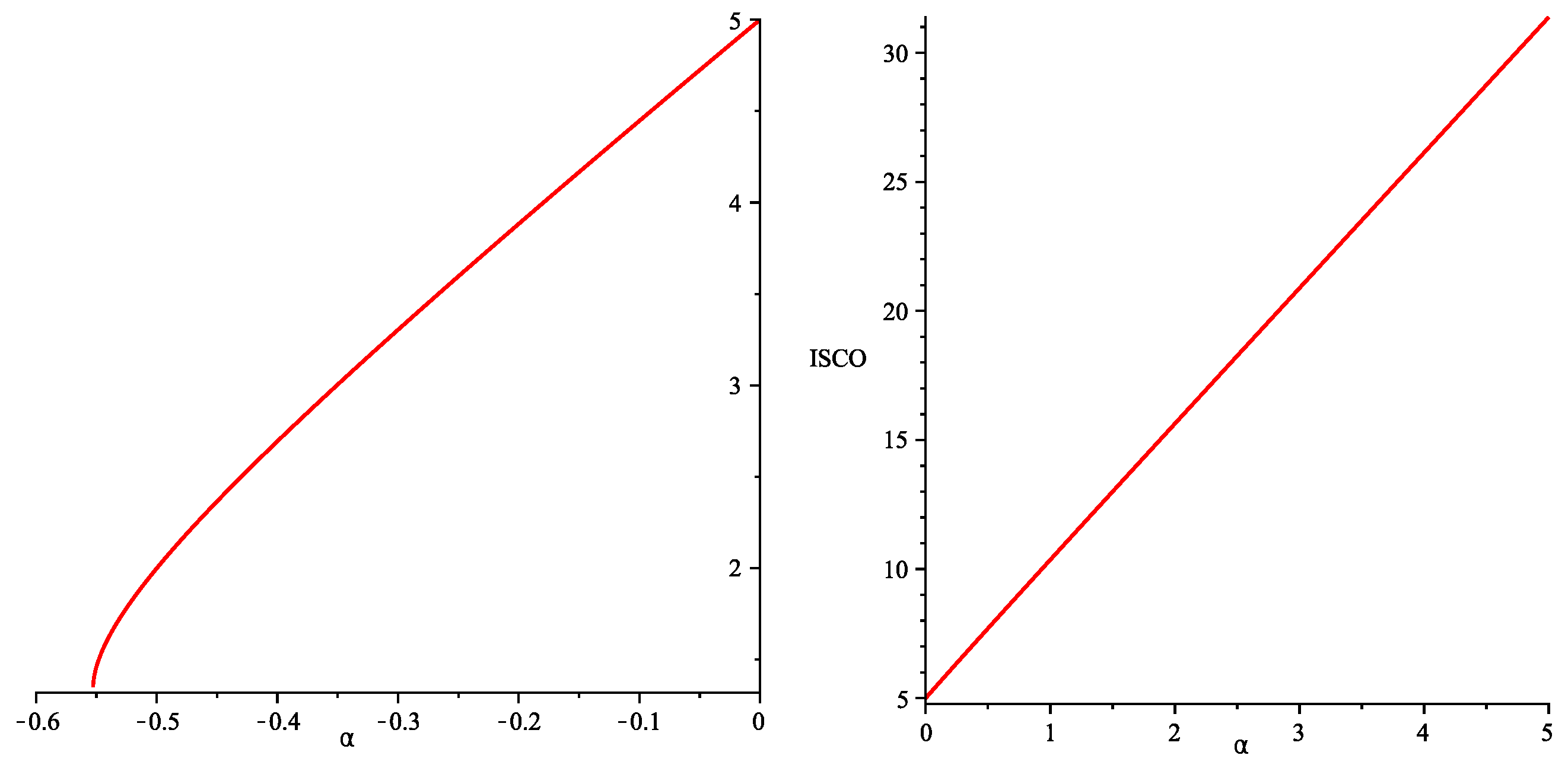
| −0.5528 | −0.0006262 | 1.333070 | 0.0040976 | 1.93984 | 1.40333 |
| −0.526 | −0.0443754 | 1.15685 | 0.0028270 | 2.30093 | 1.77325 |
| −0.5 | −0.2499996 | 1.000001 | 0.00217281 | 2.58141 | 2.00000 |
| −0.49 | −0.1757730 | 1.13203 | 0.0019932 | 2.68029 | 2.07818 |
| −0.4 | −0.0805014 | 1.55038 | 0.0011090 | 3.47165 | 2.69443 |
| 0 | −0.0209443 | 2.87940 | 0.0002927 | 6.45602 | 5.00000 |
| 0.5 | −0.0086651 | 4.42340 | 0.0001202 | 9.95281 | 7.70156 |
| 1 | −0.0047632 | 5.94338 | 0.0000659 | 13.38972 | 10.35890 |
| 10 | −0.0001533 | 32.98501 | 0.0000021 | 74.44744 | 57.57641 |
Publisher’s Note: MDPI stays neutral with regard to jurisdictional claims in published maps and institutional affiliations. |
© 2022 by the author. Licensee MDPI, Basel, Switzerland. This article is an open access article distributed under the terms and conditions of the Creative Commons Attribution (CC BY) license (https://creativecommons.org/licenses/by/4.0/).
Share and Cite
Faraji, S. Circular Geodesics in a New Generalization of q-Metric. Universe 2022, 8, 195. https://doi.org/10.3390/universe8030195
Faraji S. Circular Geodesics in a New Generalization of q-Metric. Universe. 2022; 8(3):195. https://doi.org/10.3390/universe8030195
Chicago/Turabian StyleFaraji, Shokoufe. 2022. "Circular Geodesics in a New Generalization of q-Metric" Universe 8, no. 3: 195. https://doi.org/10.3390/universe8030195
APA StyleFaraji, S. (2022). Circular Geodesics in a New Generalization of q-Metric. Universe, 8(3), 195. https://doi.org/10.3390/universe8030195






